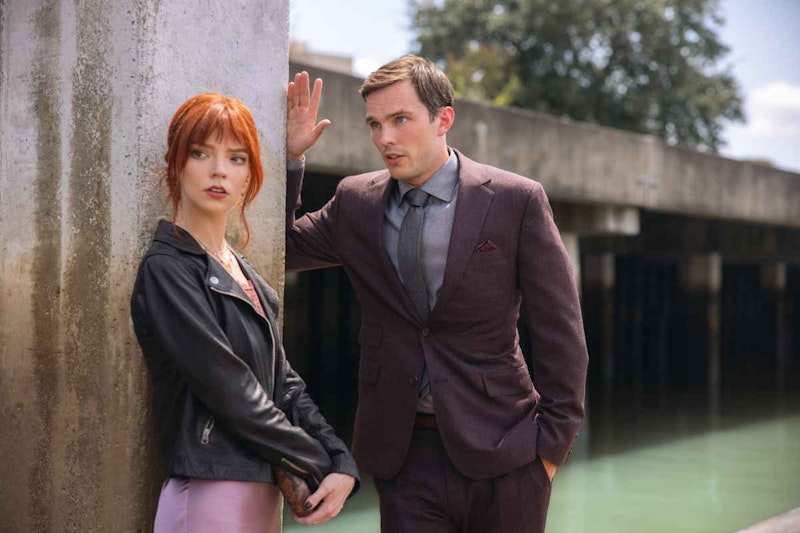Farce of the ultra-rich: there could be worse genre trends. There never really was a #MeToo era in filmmaking, mostly because 2020 was supposed to be its big year in theaters. That year, The Assistant reached a commercial release right before the pandemic hit, and then Promising Young Woman was nominated for dozens of awards but seen by far fewer people than you’d expect. With theaters closed, even the winner of Best Picture didn’t stick and got lost like so many television shows and commercials: do you remember Nomadland? Even CODA had more reach, if only because of Will Smith’s slap and a brief theatrical run after its win. A confusing couple of years for world cinema, particularly for 2020: the last two years have proven that without a theatrical run, movies don’t stick in the popular imagination. It just becomes more television.
The failure of #MeToo movie She Said is unfortunate, because it’s a better film than most others made in the wake of Harvey Weinstein’s downfall. The public’s moved on. Given how much time it takes to make a movie, and when the Weinstein story broke (early-October 2017), 2020 was really the first year that you could expect major productions about the scandal and the man’s monstrous life. It didn’t happen, and people have moved on. They’re largely, understandably, sick of such a disgusting and destructive freak. Broad satires of the ultra-rich took off right when Weinstein went down, with Succession debuting in June 2018, and films like The Hunt, Knives Out, and Ready or Not making it to cinemas before the pandemic hit. Now there’s The Menu, directed by Succession regular Mark Mylod, from a script by Seth Reiss and Will Tracy that was on the 2019 “Blacklist” of the best un-produced screenplays being passed around Hollywood.
The Menu opens with a widescreen shot of Margot (Anya Taylor-Joy) in a chic leather jacket and red hair lighting a cigarette, and as the camera pulls back, her wimpy asshole boyfriend Tyler (Nicholas Hoult) scolds her for “ruining her palate” and commanding her to put it out. They’re waiting for a boat to take them to a private island with a small group of exclusive, rich, “important” people, among them celebrities (John Leguizamo), food critics (Janet McTeer), young money finance (Arturo Castro, Rob Yang, Mark St. Cyr), and old money finance (Reed Birney). They’re all eager to try “the menu” of master chef Julian Slowik (Ralph Fiennes), whose opening dishes include foam on a rock and condiments without bread. And it’s the condiments without bread that breaks the ice and makes everyone begin to call bullshit. They were fine with all of the pretentious foodie nonsense before, but no bread?
Ah, but Julian reminds them that bread is not for them; it’s a peasant’s food, and when the finance bros start to make threats, Julian’s assistant (Hong Chau) leans in and tells them, “You will eat less than you want and more than you deserve.” The promotion for The Menu had a clever fake-out by making it seem obvious that this was yet another cannibal movie, a joke only underlined by its direct competition with Bones and All. And because the movie’s shot by Peter Deming (a regular cinematographer for David Lynch and the DP behind Scream 2 and 3, the best in the series), it’s able to nail you in place for 104 minutes. They all discover Fiennes is a psychopath, and that they’re all going to die in a murder-suicide art-food project—one which Hoult knew about. Through some cheap contrivances that feel descended from the Hayes Code, Fiennes allows Joy to escape after being humiliated by her (“Your food isn’t cooked with love, it’s cooked with obsession”). Sure, she wasn’t invited. But what is this, honor among murderous chefs? Any solidarity with a fellow service worker is dead on arrival. He even cooks her a cheeseburger, which she bites into right when the film cuts to black, a cliche move in a movie that hides its seams for just long enough.
Generally, I don’t care about plot holes. If it works, who cares? I don’t think Magnolia is very good, but I love the frogs and the singalong. Not plot holes, just ineffable; but how this character got to that place in that amount of time, how quickly a character changes emotions, how the law or love come down… if it’s played well, whatever. And The Menu is made and paid well. But a couple of hours after I saw it, I was in the shower and thinking about the Hoult character getting in trouble for taking pictures in the restaurant. They start appearing imposed on his tortillas, and he’s genuinely stunned and frightened in front of Joy. Later, he reveals that he bought “the menu” knowing that he, and his date, would die. She, understandably, dropped out. He hangs himself shortly thereafter. Why was he shocked by the photos?
It’s a good thing Mylod and Deming made this movie, because it’s a buzzy and thin script that probably wouldn’t have held up with less visually assured filmmakers. There are plenty of clunky lines (“YOU WILL NOT REPLACE ME!”) that would’ve been laughable in most other hands. Like foam on a rock and condiments, even with some bread, The Menu looks nice, doesn’t last, but doesn’t have to.
—Follow Nicky Smith on Twitter: @nickyotissmith

